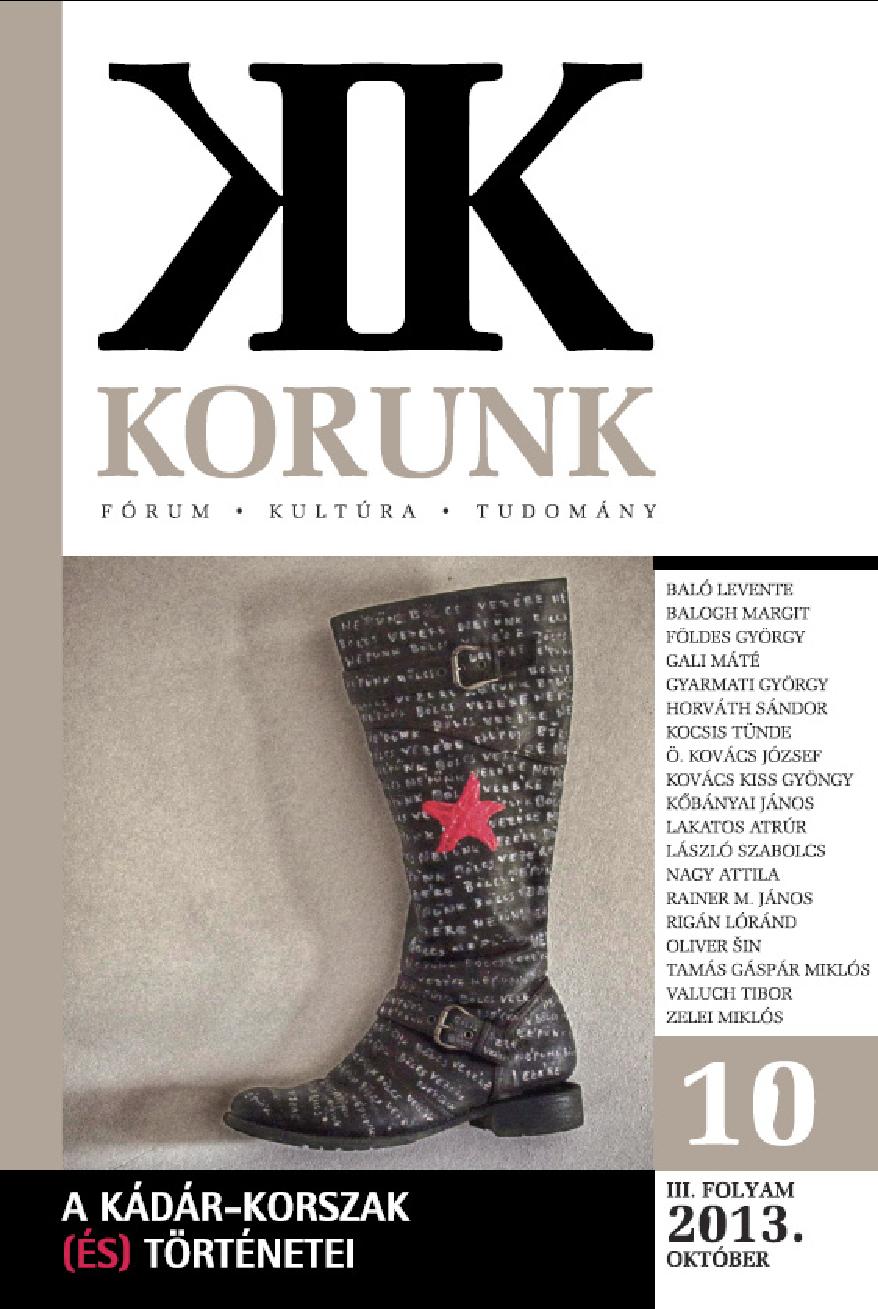A nosztalgia esete a Kádár-korszakkal
Nostalgia and the Kadar era
Author(s): György GyarmatiSubject(s): History, Social history
Published by: Korunk Baráti Társaság
Keywords: János Kádár; Kádár era; “welfare society”; “soft dictatorship”
Summary/Abstract: According to an international survey, in 2009, twenty years after the Annus Mirabilis, 72% of Hungarians considered themselves losers of the regime change, while in other post-communist countries, those who associate themselves with the losing side are considerably fewer in number, a fact which press commentaries interpret as a strikingly strong nostalgia for the last three decades of Hungarian communism, called the Kádár era. This paper situates the Kádár era in the larger historical context of the “short 20th century” from a long duration perspective, challenging the relevance of the term ‘nostalgia’. It begins by stating that in the period of 1918–1990, there were a total of nine system changes in Hungary and, chronologically, the majority of these (7) took place in the first half of the century, when the World Wars, the rotation of redwhite- brown-red terror and the global economic crisis of 1929–1933 had torn historical time into chunks of roughly 5-year periods. This also means that the algorithm of all too frequently occurring disasters and consequent trauma never left enough time for social recovery. In comparison to these precedents, the second half of the 20th century was almost completely occupied by the Kádár era, during which the system was reduced to a “soft dictatorship” and the traumatic trials and tribulations had ceased. The subsistence of Hungarian society can be well traced on a multiple timeline chart – in the first half of the century, it is hectic and fragmented (jumping up and down), then shows a slow but steady climb in the second half of the century, even though the Kádár era did not actually bring prosperity to Hungary, nor a “welfare society” by any means. It is only by contrast to previous periods and the frequent rhapsodic meltdowns of “we have to start all over again” that the Kádár era had managed to establish stable and predictable employment security and a subsequent accumulation of wealth, providing an opportunity for widespread social recovery. However, for the majority as well as the newer generation which grew up, this had become history along with the communist system in the two decades following the regime change. There could hardly be any nostalgia towards the half-century long occupation of Hungary or the status of the communist underling; however, the socialmajority usually evaluates any currently reigning system by their own existential security and welfare. After the system change, the social majority – just like in other regions of Europe – now dreams of reaching the status of “bourgeois”, although at the moment, mostly due to historical reasons, they would be content to at least secure the everyday welfare of the “petit bourgeois”.
Journal: Korunk
- Issue Year: 2013
- Issue No: 10
- Page Range: 77-90
- Page Count: 14
- Language: Hungarian

